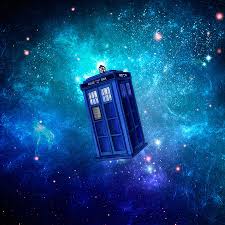
TEKS 8.8A Universe HR Diagram 2
Quiz
•
Other Sciences
•
6th - 8th Grade
•
Practice Problem
•
Medium

Alonzo Martinez III
Used 154+ times
FREE Resource
Enhance your content in a minute
22 questions
Show all answers
1.
MULTIPLE CHOICE QUESTION
30 sec • 1 pt
Which of the following best describes a star? A star is a celestial body ---
2.
MULTIPLE CHOICE QUESTION
30 sec • 1 pt
Which of the following best describes a nebula. A nebula is
3.
MULTIPLE CHOICE QUESTION
30 sec • 1 pt
Which of the following best describes a galaxy? A galaxy is ---
4.
MULTIPLE CHOICE QUESTION
30 sec • 1 pt
Use the Hertrzsprung-Russell diagram to answer the following question. A trend among the Main Sequence Stars is that
5.
MULTIPLE CHOICE QUESTION
30 sec • 1 pt
An interstellar cloud of dust and gases that serves as a location for the formation of new stars is
6.
MULTIPLE CHOICE QUESTION
30 sec • 1 pt
Galaxies are classified into all of the following types by their shapes except --
7.
MULTIPLE CHOICE QUESTION
1 min • 1 pt
Which of the following is an accurate description of the relationship between components of the universe?
Create a free account and access millions of resources
Create resources
Host any resource
Get auto-graded reports

Continue with Google

Continue with Email

Continue with Classlink

Continue with Clever
or continue with

Microsoft
%20(1).png)
Apple
Others
By signing up, you agree to our Terms of Service & Privacy Policy
Already have an account?
Similar Resources on Wayground

20 questions
Light Quiz
Quiz
•
7th Grade

27 questions
Speed
Quiz
•
7th - 8th Grade

18 questions
La energía y los cambios. Las máquinas
Quiz
•
5th - 6th Grade

19 questions
8th Grade-unit 3 test
Quiz
•
6th - 9th Grade

20 questions
Unit 4 Physics
Quiz
•
8th Grade

20 questions
prova comune di tecnologia classi III
Quiz
•
8th Grade

24 questions
Earth Science
Quiz
•
KG - University

25 questions
5th grade Ecosystems
Quiz
•
5th - 6th Grade
Popular Resources on Wayground

10 questions
Honoring the Significance of Veterans Day
Interactive video
•
6th - 10th Grade

9 questions
FOREST Community of Caring
Lesson
•
1st - 5th Grade

10 questions
Exploring Veterans Day: Facts and Celebrations for Kids
Interactive video
•
6th - 10th Grade

19 questions
Veterans Day
Quiz
•
5th Grade

14 questions
General Technology Use Quiz
Quiz
•
8th Grade

25 questions
Multiplication Facts
Quiz
•
5th Grade

15 questions
Circuits, Light Energy, and Forces
Quiz
•
5th Grade

19 questions
Thanksgiving Trivia
Quiz
•
6th Grade
Discover more resources for Other Sciences

10 questions
What's Matter?
Quiz
•
4th - 8th Grade

10 questions
Law of Conservation of Energy
Quiz
•
6th Grade

10 questions
Hunting for Properties
Quiz
•
4th - 8th Grade

25 questions
Conduction, Convection, Radiation
Quiz
•
5th - 6th Grade

16 questions
Moon Phases
Quiz
•
6th Grade

25 questions
Weather and Climate
Quiz
•
6th - 8th Grade

15 questions
Water Cycle
Quiz
•
5th - 6th Grade

13 questions
Weathering and Erosion
Quiz
•
4th - 8th Grade
